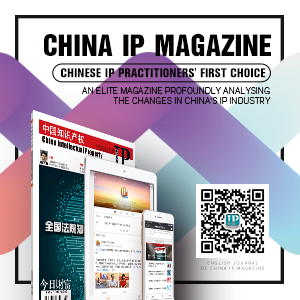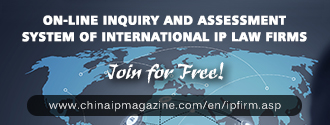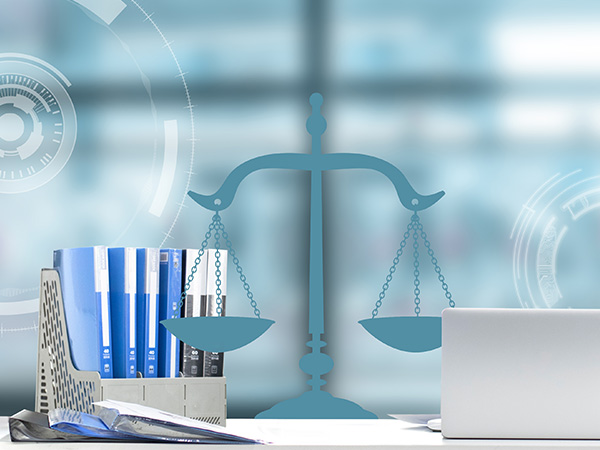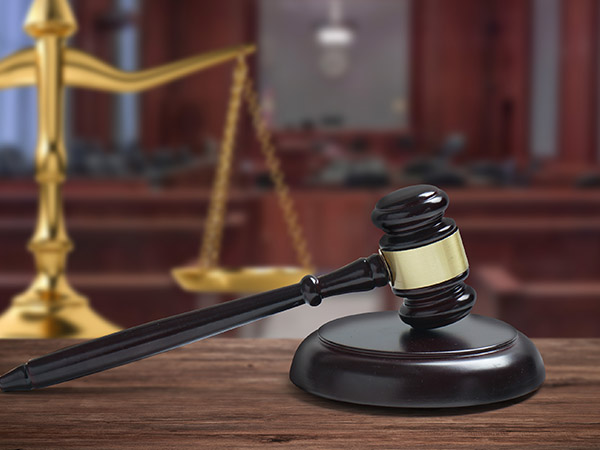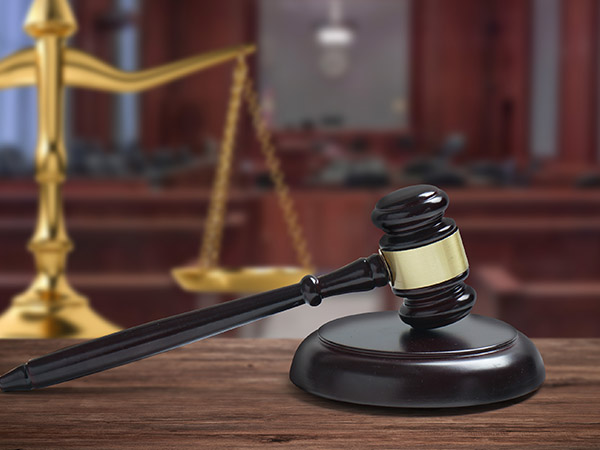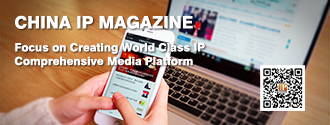Understanding of the Pharmaceutical Patent Litigation Cases in China from the Perspective of 24 Month Approval Period
XU Bo Judge of Beijing IntellectualProperty Court, Doctor of Law
The General Office of Central Committee Of The Communist Party Of China(CCCPC) and the General Office of State Council jointly issued Opinions on Deepening of Review and Approval System Reform to Encourage Medicinal and Medical Appliance Innovation, which pointed out that China must explore and establish the “system for pharmaceutical patents linkage.” The State Food and Drug Administration in its Policies Concerning the Protection of the Rights and Interests of Innovators for Encouraging Innovation in Drugs and Medical Devices (Draft) (referred to as “Draft Version”), made a preliminary design for the system, providing for “a waiting period of no more than 24 months to be set by drug approval authorities upon receiving notice of judicial proceedings on patent infringement” pending on judicial determination of which to decide whether to approve for marketing of the drug. This is common practice in patent linkage countries which is also called “approval withholding period” for different lengths though in different countries, e.g., 30 months in US, 24 in Canada and only 9 in Korea.
Obviously the approval withholding period affects the marketing launch time of the generic drugs, for which the patent linkage system is of vital importance, which must be based on national environment to be carefully considered. Here, there should be policy consideration, as well as micro empirical support. From the judicial perspective, the author attempts to offer some preliminary thoughts and suggestion for the system design based on our judicial practice.
Examples: Samples of Drug Patent Dispute in China
In a patent linkage country, a generic drug maker may challenge a drug patent in the drug approval process (declaratory action for non infringement or invalidity). The patent holder may decide whether to sue for infringement, which will directly affect marketing of the generic drug. This is a key competitive process between drug research and generic drug manufacturing companies for patent infringement and validity. Although patent linkage system is yet to be fully implemented, the patent disputes are similar, e.g., in the following three examples.
Case 1. Novartis v. Hansoh Pharmaceuticals
In July 2014, Shanghai Novartis Trading Co. (Novartis), a licensee of patent No. Z L01817895.2 for Treatment of Gastrointestinal Stromal Tumors (the ’895 Patent), sued Jiangsu Hansoh Pharmaceuticals (Hansoh) in Beijing Second Intermediary Court for patent infringement against Hansoh Pharmaceuticals (Hansoh) on grounds that Hansoh indicates in its product packaging for XINWEI that its drug can be used for treatment of gastrointestinal stromal tumors, and that its manufacturing, sale, or offer for sale are infringement of the ’895 patent. Novartis also sought preliminary injunction against Hansoh for using the indication on XINWEI. After the court awarded preliminary injunction, Novartis filed suit in the Beijing Second Intermediary Court.
In the infringement proceedings, Hansoh requested on September 5, 2014 with the Patent Reexamination Board of CNIPA (PRB) for invalidation of the ’895 patent. The PRB on October 23, 2015 issued a decision invalidating the ’895 patent. Based on this decision, the Beijing Court dismissed Novartis claim on the grounds that “a patent invalidated is considered invalid ab initio,” and issued a decision on December 28, 2015 dismissing Novartis’ claim. On March 16, 2016, Beijing High People’s Court rejected Novartis petition for appeal.
Novartis did not accept the PRB invalidation decision, and on February 29, 2016 instigated administrative review proceeding with Beijing Intellectual Property Court for reversal. On December 30, 2016, Beijing IP Court dismissed Novartis request. On December 20, 2017, Beijing High Court made its final decision dismissing Novartis complaint.
That brings an end to the patent dispute for ’895 patent between Novartis and Hansoh, which mixed up civil infringement dispute and the administrative process for patent invalidation, lasting for 41 months, well beyond the 24 month approval period. Of course, if it is counted to conclusion of the infringement case, i.e., Beijing High Court dismissal of Novartis appeal on March 16, 2016, it is about 20 month.
Case 2. Glaxo v. Anhui BioChem Pharmaceuticals
On March 23, 2010, GlaxoSmithKline Grop, GSK (China) Investment, GSK Pharmaceuticals (Suzhou) (collectively “GSK”), as licensees of patent No. Z L99126580.7 (the ’580 patent) for “Process for preparing 1,3-oxygensulphur cyclopentane nucleotide like medicine composition,” filed a lawsuit Beijing Fist Intermediary People’s Court against Anhui BioChem Pharmaceuticals (BioChem) for infringement on grounds that BioChem gave false information of noninfringement in its application for registration with CFDA of the Lamivudine pills seeking a court order for BioChem to make a true statement.
Shortly after the lawsuit was filed, an individual named MENG Qingsan filed a request for invalidation of the ’580 patent on May 14, 2010 with the PRB, which renders a decision on December 30, 2010 sustaining Meng’s request. On March 31, 2011, Shily Biolog Chemistry Co., Ltd. of Canada(Shily), patentee of the ’580 patent instigated judicial review proceeding at Beijing First Intermediary Court to vacate the PRB invalidity decision. On November 30, 2011, the court decreed to reject Shily’s complaint, but probably due to expiration of the ’580 patent during the judicial review proceeding (i.e., April 29, 2011) Shily did not further appeal to the Beijing High Court. Now that the ’580 patent expired GSK withdrew its complaint against Anhui BioChem on June 14, 2011.
Although the infringement and invalidation suits took place between various parties, they all centered around the ’580 patent more or less at the same time, and the relationship is obvious. Counted from the beginning of the infringement suit till the end of judicial review of administrative proceedings, it was 20 months. But it’s worth noting that the judicial review did not enter appellate stage which could easily exceed 24 months. If it counted to the end of the infringement suit, i.e., withdrawal of GSK’s case from Beijing First Intermediary Court (June 14, 2011), it was about 15 months.
Case 3. Squibb v .CTTQ Pharmaceutical Co. Ltd.
On March 21, 2011, Squibb Bristol- Meyers Co. (Squibb), patentee of the invention patent No. Z L200510128719.4 for Low Dose Entecavir Formulation and Use (the ’719 patent), filed infringement suit with Beijing First Intermediary Court against Jiangsu CTTQ Pharmaceutical (“CTTQ”) for infringement of the ’719 patent by making, selling, and offer to sell entecavir dispersible tablets, seeking injunction and damages. On March 19, 2012, the court dismissed all Suibb’s complaints.
During the infringement proceedings, on June 22, 2011, CTTQ requested invalidation of ’719 patent with PRB, which rendered a decision on January 9, 2012 for invalidation of claim 3, but sustained validity of claims 1 and 2. Dissatisfied, CTTQ instigated judicial review with Beijing First Intermediary Court on September 28, 2012, which was dismissed on May 15, 2013. Still dissatisfied, CTTQ appealed to Beijing High Court. On December 27, 2013 the High Court made a final decision that claims 1 and 2 did not possess inventiveness either, and therefore vacated the invalidity decisions below.
With the termination of the Squibb v. CTTQ patent dispute over ’719 patent, it was altogether 33 months from infringement suit to conclusion of judicial review, exceeding also the 24 month approval period. But it counted from the conclusion of infringement, i.e., Beijing First Intermediary Court dismissal of Squibb’s complaints (March 19, 2012), it was 12 months.
Specific Analysis Based on China’s Judicial Practice
The above three cases all started with infringement suits, lasting 20, 15 and 12 months respectively, all within the planned 24 month approval period. However, judging from the entirety of the three cases, they are followed by invalidity proceedings which is the uniqueness of such pharmaceutical patent disputes. Besides, due to the tremendous interests involved for pharmaceutical patent disputes, such uniqueness becomes more prominent than in others. For this reason the problem might become worsened off if attention is centered on infringement rather than on subsequent validity disputes.
Specifically, pharmaceutical patents are basically invention patents, having been through substantive examination prior to issuance with more stable validity. For this reason, judicial interpretation1 has provided that infringement proceedings should not be stayed even if defendant requests for interlocutory invalidity, as, e.g., in the above case 3 without waiting for the result of the administrative invalidity proceeding. Nothing is wrong, but the risk is there, especially when the court finds infringement and decrees for injunction and damages2. The reason is pharmaceutical patents are highly likely to be invalidated, which makes the prior finding of infringement groundless.
Also in the above case 3, suppose the decision was not dismissal of plaintiff’s complaint, but the judgment for injunction and damages based claims 1 and 2 of the ’719 patent has been enforced, then what if the two claims were finally invalidated after appeal of the judicial review? Now the judgment is difficult to reverse, for the patent was valid when the court made the infringement finding, and therefore it was not a “mistake by which a judgment was rendered” under Article 233 of the Civil Procedure. Under such circumstances, one view is to allow defendant to sue for unjust enrichment. Moreover, in some injunction situations, because of the finding for infringement of use of the patent, the medicine explanation note has been modified3, making it less likely to seek redress.
To avoid such risks, the practical choice is to stay the infringement proceedings, pending the ultimate solution of validity. From practical aspect, these pharmaceutical patent disputes are mainly foreign-related cases between domestic and foreign companies, and are not governed by the time limit of the Civil Procedure. And these cases are mostly influential, difficult, complicated, and likely to be invalidated. All these considerations make the judge inclined to “stay”4 the case pending for solution of patent right. But this also results in prolonging the infringement trial, and 24 month approval period is obviously not enough. According to the “Draft Version” the drug approval authorities may approve the drug for marketing if no judicial decision is made within the approval period5. Therefore, a generic drug manufacturer has wait patiently for 24 months by following appropriate litigation strategies, to receive the go ahead, but this is obviously deviates from the basic notion of the patent linkage system.
But nothing is absolute. The court may choose to follow the PRB decision rather than sit tight to the end of judicial review proceedings, which could both lower the risk for finding of infringement, and effectively shorten the litigation time6. Specifically: for patents that have been sustained, infringement proceedings will go on, but the risk is still there; for patents invalidated, a decision will be rendered for dismissal, as did in the above case 1, which has been well received in judicial interpretations, under which the drug authorities will go ahead with the approval for marketing of the generic drug.7
Nevertheless, there are also problems in the above practice. On the one hand, the court does not play a role in the resolution of the dispute, short of filling its obligation of “playing a leading role in judicial protection of intellectual property rights”; on the other, were an invalidated patent pronounced to be effectively after judicial review8, although patentee may file another lawsuit9, but with the generic drug’s investment and cost, and public health may have benefited from the marketing of the generic drug, a renewed infringement suit will inevitably increase social cost. This runs counter to what has been expected from the patent linkage system.



